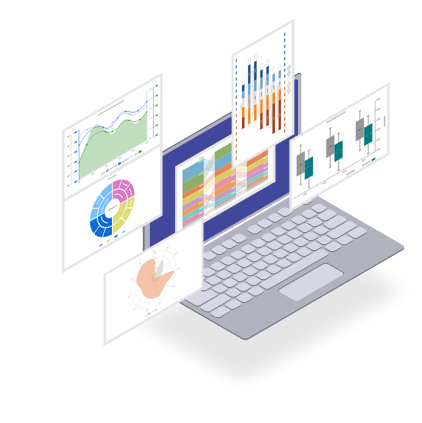Contents
The financial sector’s transformation: US healthcare innovation
4 minutes read
31 March 2025

The US healthcare sector is witnessing a remarkable shift. Financial innovations and technological advancements are helping address long-standing challenges such as rising costs, limited access to care, and inefficient administrative processes. This transformation, fueled by the financial sector’s involvement, promises not only to enhance patient care but also to improve the affordability and accessibility of services.
Overview of healthcare innovation
The landscape of US healthcare is rapidly evolving, with significant changes taking place on both financial and technological fronts. Historically, healthcare has been a system weighed down by inefficiencies and high costs. However, as new financial strategies such as private equity investments and hospital consolidations take root, healthcare organizations are better equipped to optimize operations. Meanwhile, innovations like artificial intelligence (AI) and fintech solutions are streamlining administrative tasks, enhancing patient care, and providing new models for financing.
These innovations are addressing some of the most pressing challenges faced by the sector, including limited access to healthcare services, especially in underserved communities. By focusing on affordability, streamlined services, and improved patient outcomes, these changes are reshaping how healthcare is delivered and financed.
Importance of the financial sector
The role of the financial sector in healthcare innovation cannot be overstated. It serves as the engine that powers the adoption of new technologies and operational models. From venture capital investments to private equity acquisitions, the financial sector provides the necessary capital that allows healthcare organizations to explore new solutions to old problems.
These financial strategies not only help healthcare providers keep pace with technological changes but also drive improvements in operational efficiency and patient outcomes. For example, private equity firms may acquire hospitals or other healthcare assets, enabling them to implement cost-saving technologies or innovative care models that might otherwise be out of reach.
In essence, the financial sector acts as a catalyst, enabling healthcare providers to innovate and adapt to shifting market dynamics.
Financial trends in healthcare
Financialisation of healthcare
One of the most significant changes in the healthcare sector is the increasing financialization of healthcare entities. Over recent years, healthcare organizations have increasingly been viewed as assets for capital accumulation, making them ripe for private equity investments. This trend has led to the consolidation of hospitals and healthcare networks, allowing larger entities to achieve economies of scale.
While consolidation can lead to improved efficiency and expand patient access to care, it has also contributed to higher healthcare costs. With fewer independent providers in the market, competition has been reduced, leading to increased prices for medical services. In addition, private equity firms, driven by the desire for short-term profits, may push for cost-cutting measures that result in reduced quality of care or higher patient bills.
While financialization can create efficiencies, it also raises concerns about patient affordability, as many Americans struggle to cover rising healthcare expenses.
Impact on patient affordability
The financial trends in healthcare, especially those driven by private equity and hospital consolidations, have contributed to the rising cost of care. With fewer competing providers, many Americans are facing higher out-of-pocket expenses, including premiums, deductibles, and co-pays. In fact, almost half of Americans report struggles with paying for medical care, making affordability one of the top challenges facing the healthcare system.
To help alleviate this burden, healthcare providers and financial institutions are offering patient financing programs, including loans and payment plans, designed to make care more affordable. These solutions can help reduce financial barriers and ensure patients receive the care they need when they need it.
Technological innovations
Role of AI and automation
Artificial intelligence (AI) is transforming the healthcare sector in various ways, particularly in financial management and patient care. One of the key benefits of AI is its ability to automate billing processes and optimize revenue cycle management. AI can also identify discrepancies in claims, reducing the potential for errors and ensuring accurate reimbursements for healthcare providers.
Predictive analytics powered by AI is helping healthcare organizations make more informed decisions about budgeting, resource allocation, and future financial trends. These advancements enable providers to allocate resources efficiently, enhance cost-effectiveness, and improve overall operational efficiency.
Moreover, AI-driven fraud detection systems are becoming essential tools in reducing billing errors, ensuring compliance with regulations, and preventing financial fraud.
Digital payments and fintech solutions
Fintech is transforming payment systems in healthcare by providing more efficient, transparent, and accessible payment solutions. Innovations like mobile payment platforms, integrated electronic health record (EHR) payment systems, and text-to-pay solutions are streamlining billing processes for both patients and providers.
For example, mobile point-of-sale terminals enable patients to pay their bills instantly at the point of care, reducing administrative overhead and improving patient satisfaction. Additionally, these digital solutions are reducing administrative costs and making it easier for patients to understand their medical bills, which contributes to improved financial experiences.
Fintech is also enabling new forms of patient financing, such as pay-later plans, which allow patients to break down their medical expenses into manageable installments.
Challenges and opportunities
Cybersecurity concerns
As healthcare organizations become increasingly reliant on digital technologies, the risk of cyberattacks grows. Ransomware attacks targeting sensitive patient data are on the rise, and vulnerabilities in Internet of Medical Things (IoMT) devices are also emerging. These threats not only compromise patient privacy but also pose significant financial risks to healthcare organizations.
Cybersecurity breaches can lead to costly downtime, lawsuits, and regulatory fines, which can have a severe impact on the financial stability of healthcare providers. Strengthening cybersecurity measures, such as encrypting patient data, implementing multi-factor authentication, and training staff to recognize phishing attempts, is essential to safeguard both patient information and financial assets.
Future prospects
Looking ahead, the US healthcare sector is likely to see continued investment in cutting-edge technologies that enhance both patient care and financial management. AI will further optimize resource allocation and financial decision-making, while fintech solutions will continue to drive affordable care through more streamlined and transparent payment systems.
Telemedicine and remote monitoring technologies are also expected to expand, offering patients more affordable and accessible healthcare options, especially for those with chronic conditions. These technologies promise to reduce the cost of care, improve patient outcomes, and increase the overall efficiency of the healthcare system.

Ready to own a piece of the world’s biggest brands?
- Invest in 4,000+ US stocks & ETFs
- Fractional investing
- Zero account opening fees
- Secure and seamless
Start investing in just 2 minutes!

Build your global portfolio.
.png)
Invest in companies you love, like Apple and Tesla.

Track, manage, and grow your investments.
The financial sector is playing a pivotal role in driving innovation in the US healthcare system. Through financial strategies like private equity investments and technological advancements such as AI and fintech solutions, the sector is reshaping how healthcare is delivered and financed. While these innovations hold promise for improved efficiency and patient care, they also present challenges related to rising costs and cybersecurity risks.
Frequently asked questions about the US healthcare sector


Contributed by Denila Lobo
Denila is a content writer at Winvesta. She crafts clear, concise content on international payments, helping freelancers and businesses easily navigate global financial solutions.



